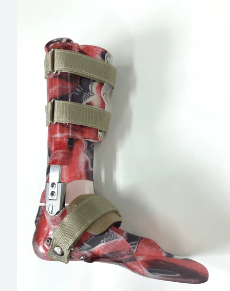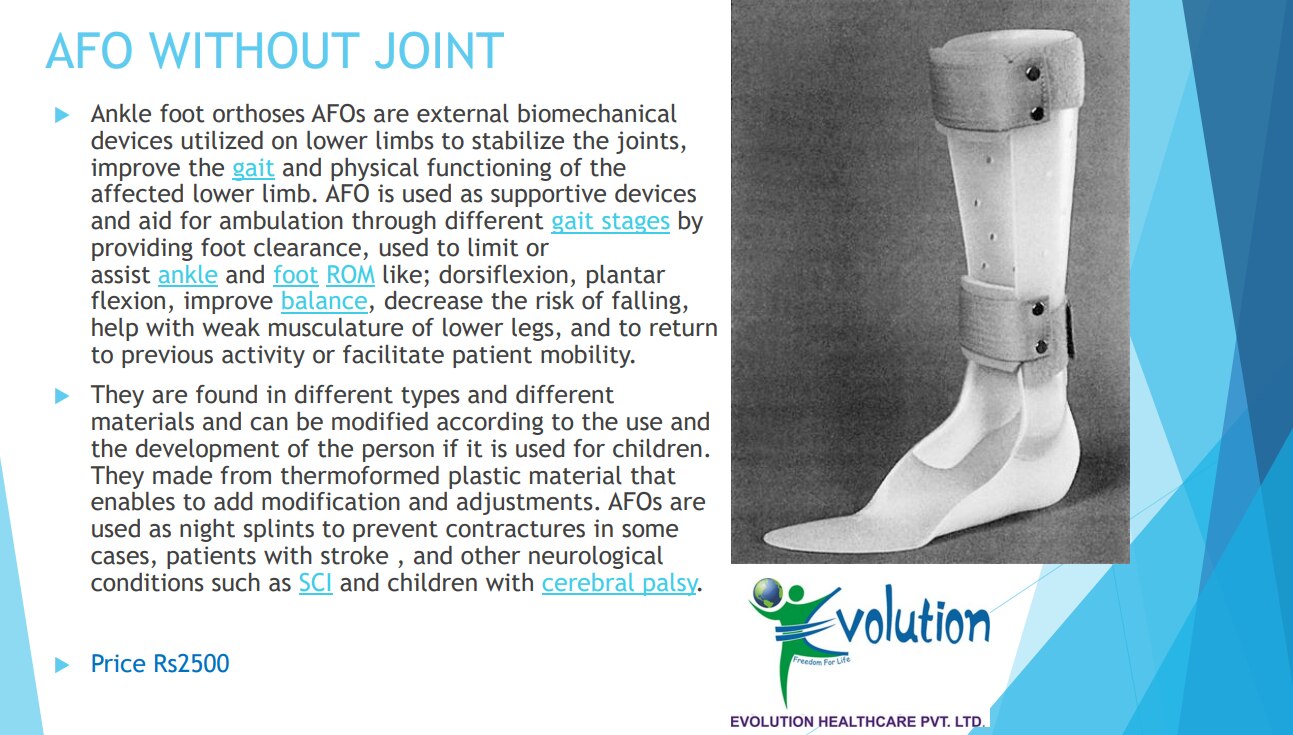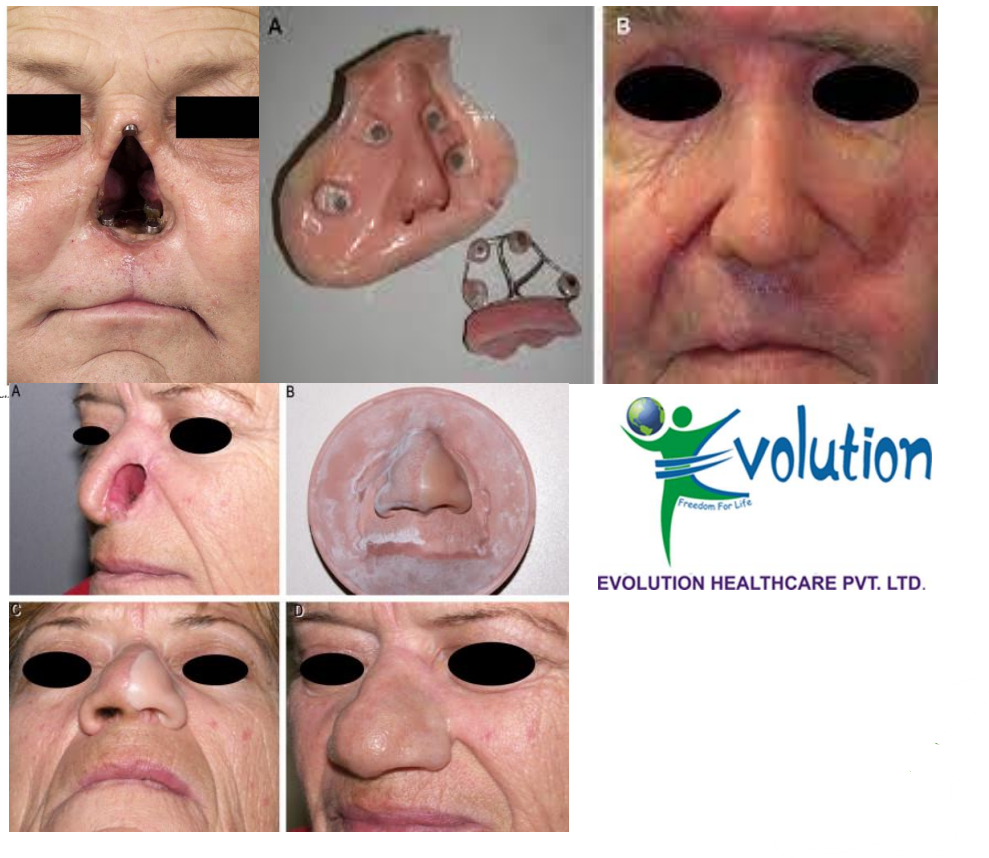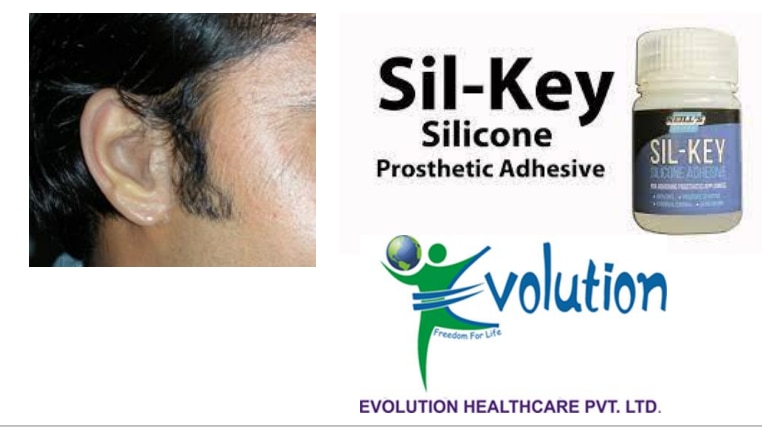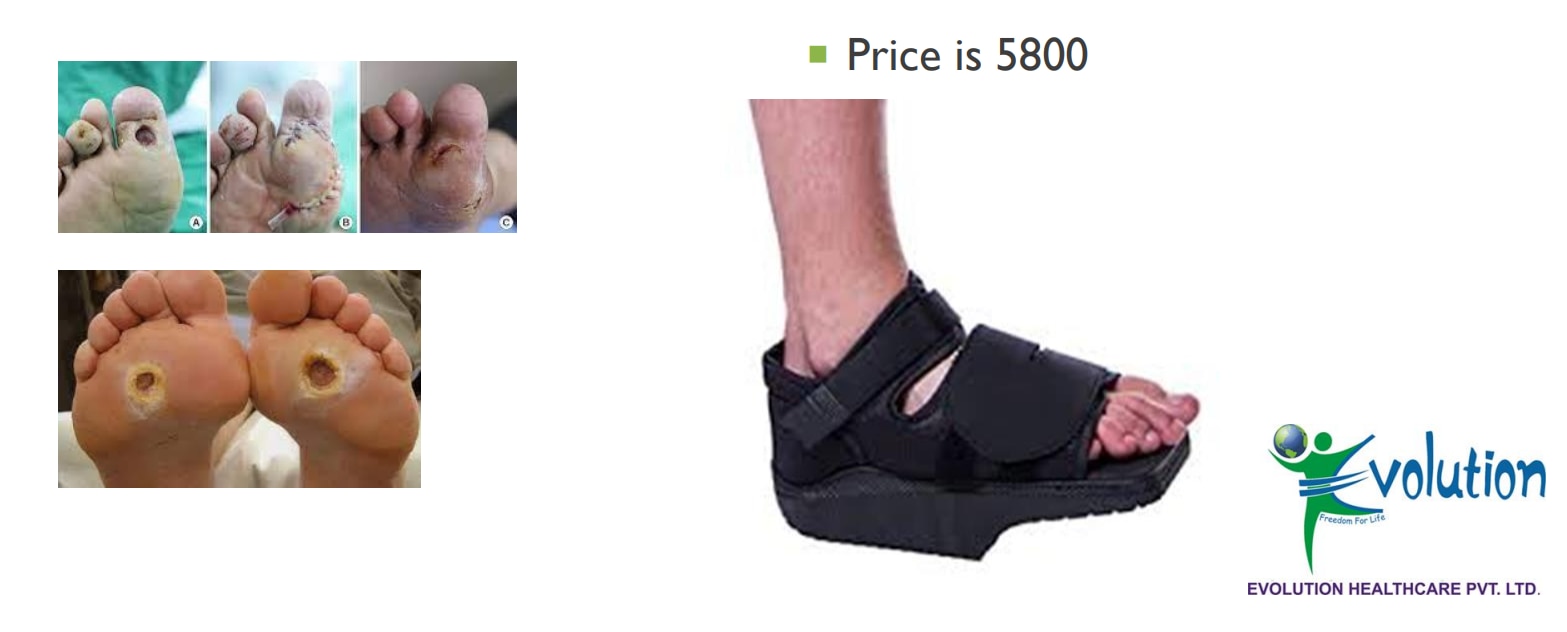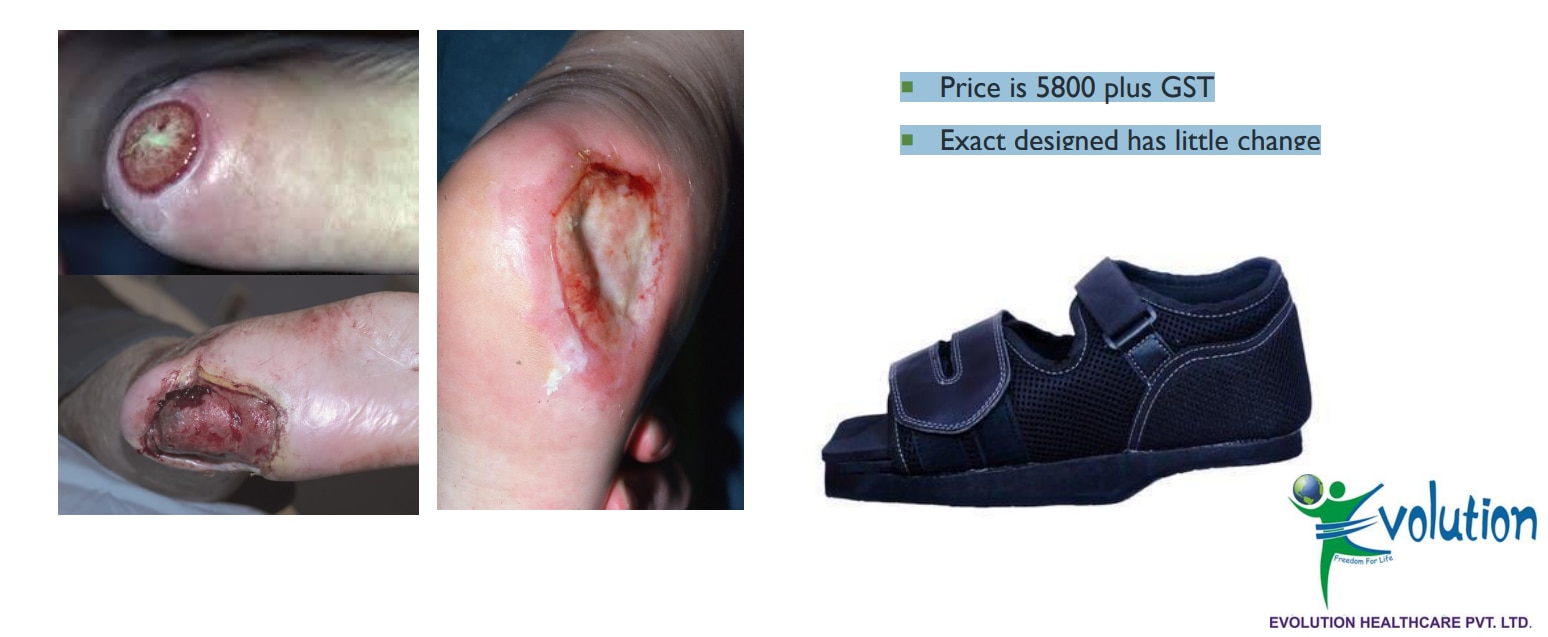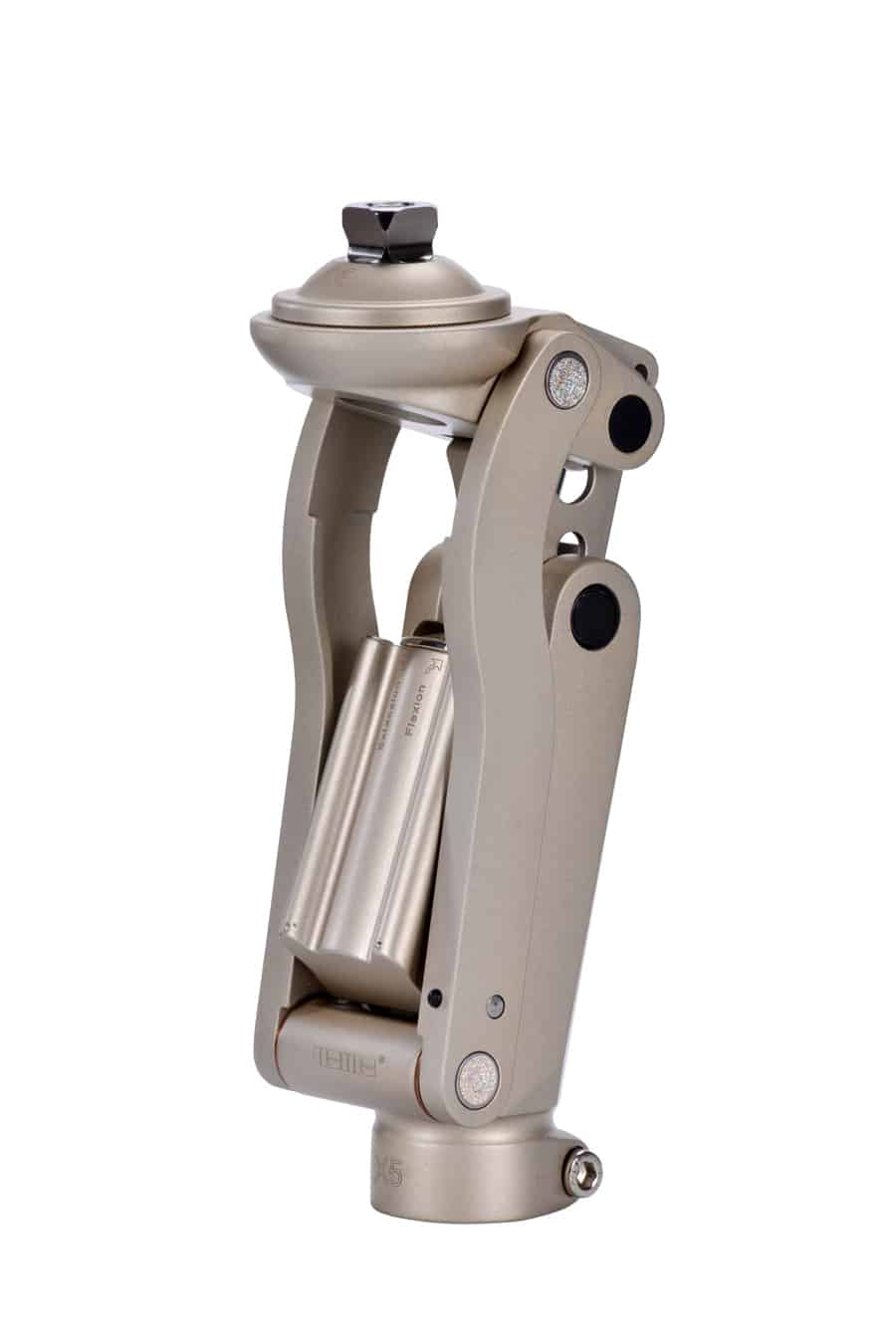A double-action ankle joint ankle-foot orthosis (AFO) is a type of orthotic device designed to support and stabilize the ankle and foot. It features two separate joints, one for dorsiflexion (lifting the foot up) and one for plantarflexion (pointing the foot down). This dual-joint mechanism allows for more natural and controlled movement of the ankle, helping to address various conditions affecting gait and stability. Here are some key points about a double-action AFO: Functionality: The double-action joints provide the ability to control both upward and downward motion of the foot. This helps in managing conditions like foot drop, where the foot cannot be lifted properly, or other gait abnormalities. Customization: These AFOs are often custom-made to fit the individual's specific anatomy and needs. Adjustments can be made to fine-tune the range of motion and alignment. Materials: They are typically made from lightweight and durable materials such as thermoplastics or carbon fiber, which offer a balance of strength and flexibility. Indications: They are used for conditions like cerebral palsy, stroke, peripheral neuropathy, or other neurological or musculoskeletal disorders that affect ankle and foot function. Design: The double-action mechanism allows for controlled movement and can help in improving gait, stability, and overall mobility.

